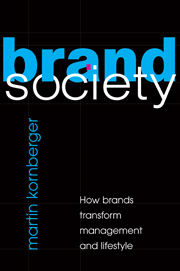Conclusion
Published online by Cambridge University Press: 10 January 2011
Summary
‘The conclusion, in which nothing is concluded’
Thus did Samuel Johnson head the final chapter of his novel Rasselas. Will we be able to offer you much more? At the end of our odyssey through several disciplines and traditions, can we draw up some take-away implications, packaged up conveniently in bullet-point form?
As Jean-Luc Godard famously said, a story should have a beginning, a middle and an end – but not necessarily in that order. You will have drawn some conclusions from the introduction of this book and formed an opinion after the first couple of pages. Love letters and good books share this uncontrollable, viral and contagious flow of meaning. So while you hopefully have used this book as a ladder to get somewhere where the book cannot get to, and climbed beyond it (to use Wittgenstein's famous metaphor from his Tractatus), we'd like to step back to the three main concepts of this book – brands, management and lifestyle – and offer some speculations about their future evolution. Please note that this narrative has not been derived from staring into a crystal ball; rather than clairvoyance, the following represents only one of many possible conjectures.
Lifestyle
At the beginning of our journey, we argued that brands form a mountain range of evidence in search of a theory. Brands are pervasive and ubiquitous. We take them for granted – from pop art to McDonald's, from Starbucks to Greenpeace, brands are the mechanism that connects organizations and people.
- Type
- Chapter
- Information
- Brand SocietyHow Brands Transform Management and Lifestyle, pp. 263 - 272Publisher: Cambridge University PressPrint publication year: 2010

